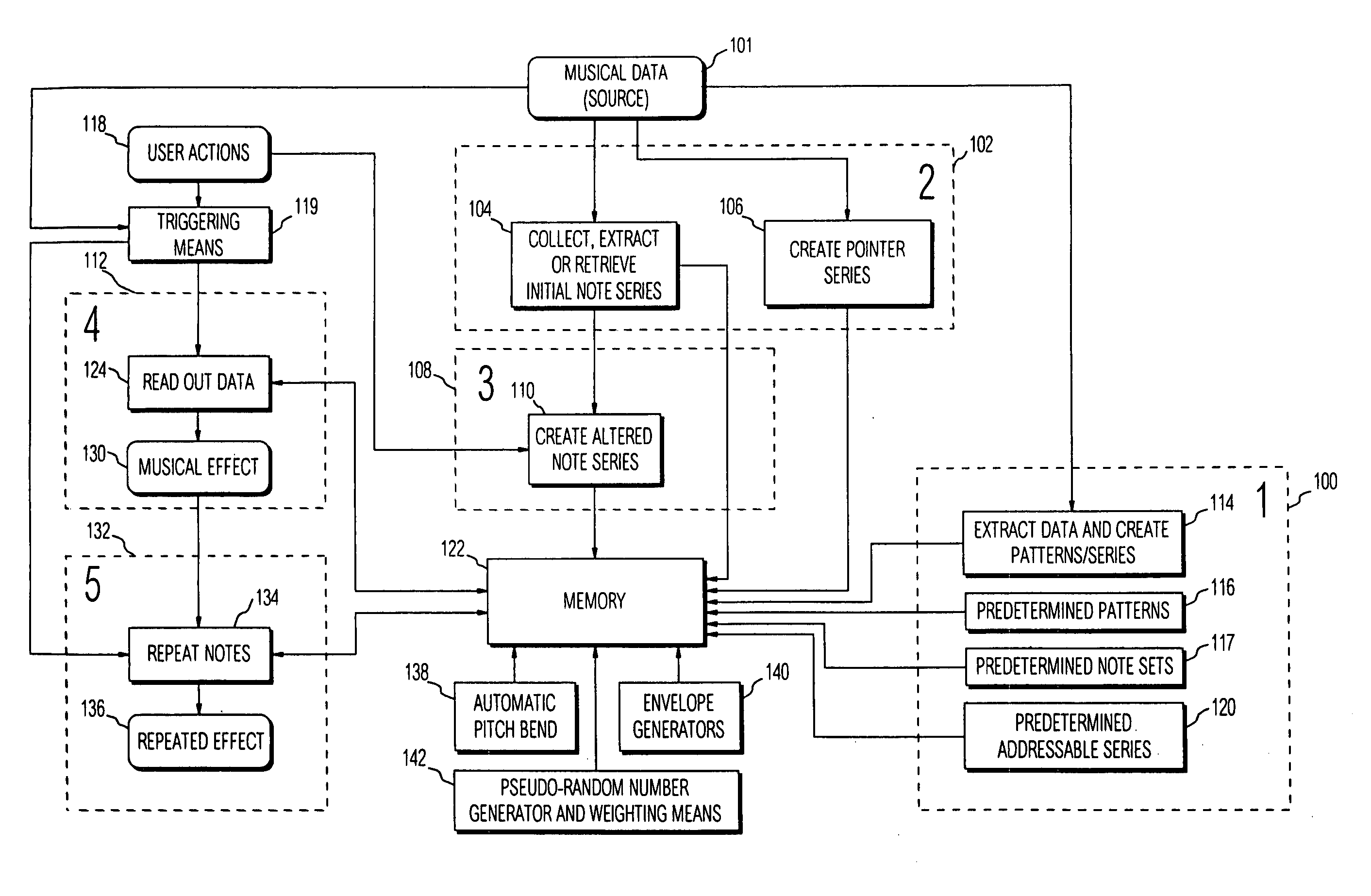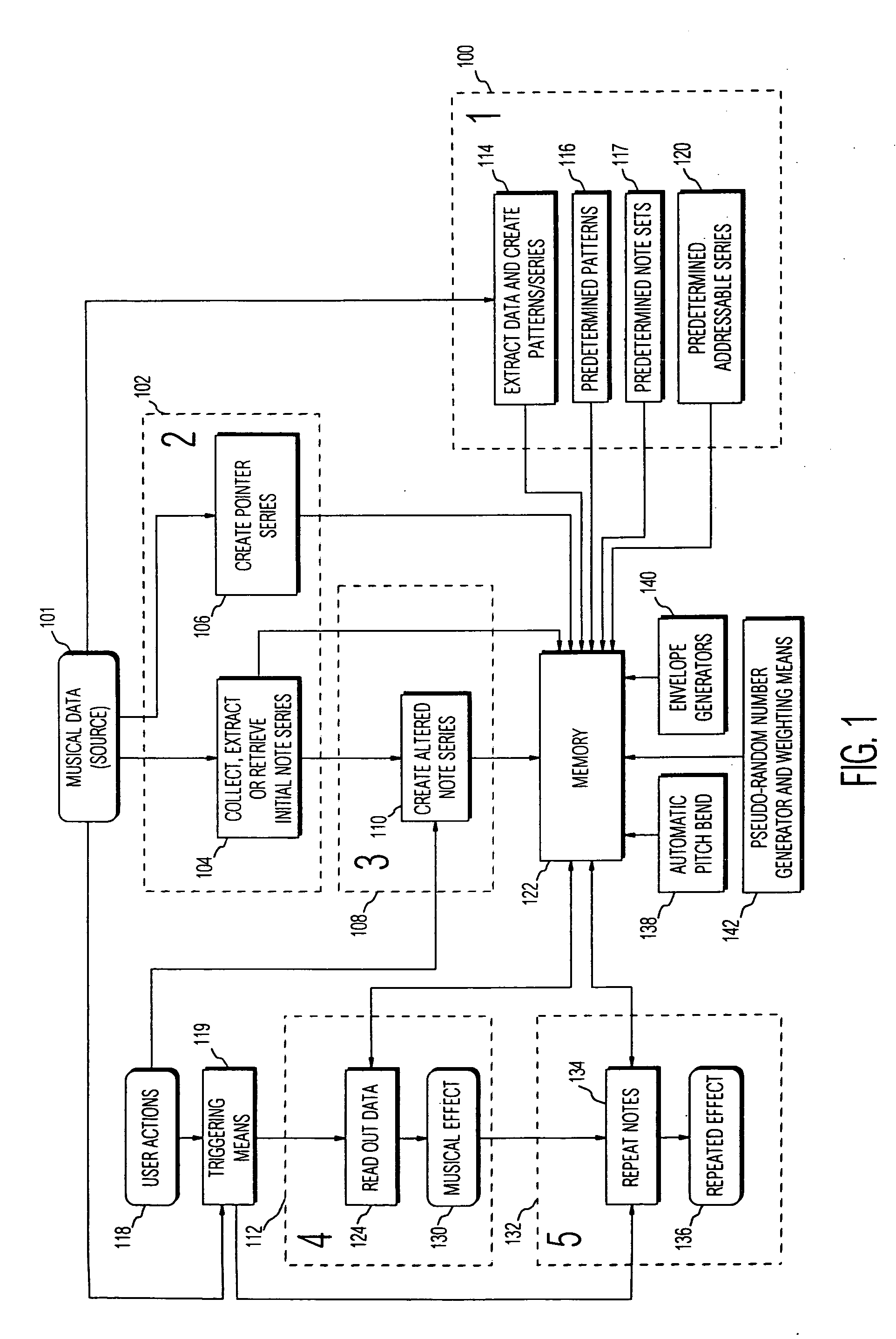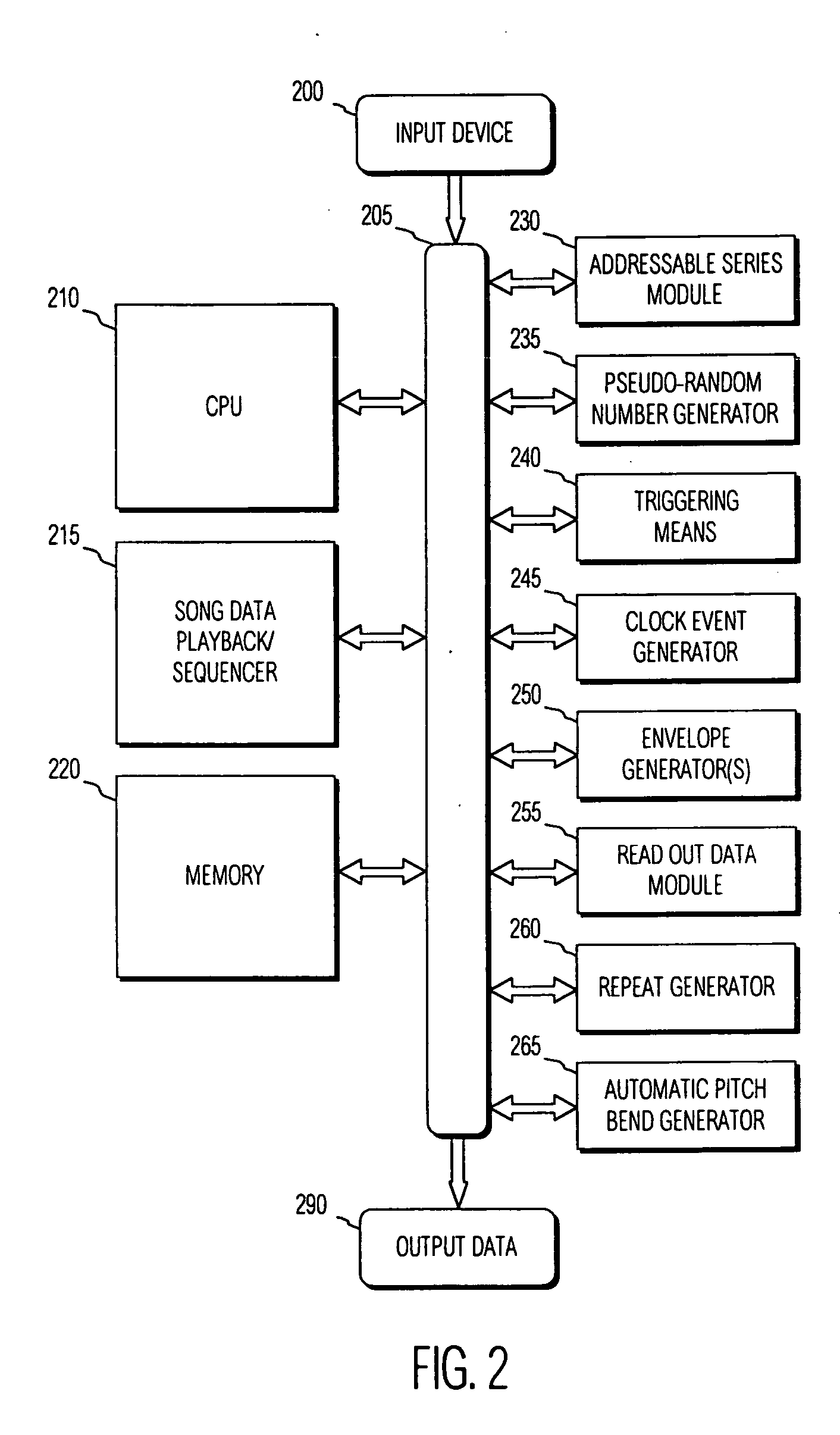Method and apparatus for randomized variation of musical data
a musical data and randomized variation technology, applied in the direction of gearworks, toys, power conversion systems, etc., can solve the problems of repetitive musical phrases, complicated patterns, and repetitive mechanical sounds of electronic musical instruments, and achieve the effects of reducing the number of musical phrases, reducing the variety of musical instruments, and increasing the complexity of musical instruments
- Summary
- Abstract
- Description
- Claims
- Application Information
AI Technical Summary
Problems solved by technology
Method used
Image
Examples
Embodiment Construction
[0194] In the device and method described here, the MIDI standard (Musical Instrument Digital Interface) is utilized to define which note is to be played and the volume (velocity) at which that note is to be played. This allows for both note pitch and note velocity information to be received from keyboards or other controlling devices, and transmitted to devices incorporating tone generation means. The MIDI standard also allows for other types of data to be transmitted to such devices, such as panning information that controls the stereo placement of a note in a left-to-right stereo field, program information that changes which instrument is playing, pitch bend information that controls a bending in pitch of the sound, and others. The MIDI standard also provides a way of storing MIDI data representing an entire song or melody, known as the Standard MIDI File, which provides for multiple streams of MIDI data with timing information for each event.
[0195] The MIDI standard is well kno...
PUM
 Login to View More
Login to View More Abstract
Description
Claims
Application Information
 Login to View More
Login to View More - R&D
- Intellectual Property
- Life Sciences
- Materials
- Tech Scout
- Unparalleled Data Quality
- Higher Quality Content
- 60% Fewer Hallucinations
Browse by: Latest US Patents, China's latest patents, Technical Efficacy Thesaurus, Application Domain, Technology Topic, Popular Technical Reports.
© 2025 PatSnap. All rights reserved.Legal|Privacy policy|Modern Slavery Act Transparency Statement|Sitemap|About US| Contact US: help@patsnap.com



